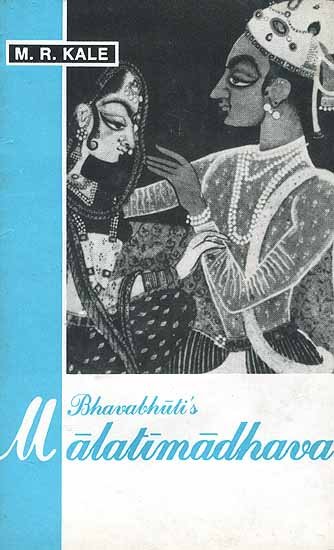Malatimadhava (study)
by Jintu Moni Dutta | 2017 | 52,468 words | ISBN-10: 8120813057 | ISBN-13: 9788120813052
An English study of the Malatimadhava by Bhavabhuti:—A Prakarana type of Drama in ten acts. The main story revolves around the love of Malati (daughter of Bhurivasu—minister of Padmāvatī) and Madhava (son of Devarata—minister of the king of Vidarbha). This study discusses the life and history of the author, as well as the literary, social, religio...
Preface
Bhavabhūti is considered to be a great dramatist in classical Sanskrit literature. He is the author of three dramatic compositions viz., Mahāvīracarita, Mālatīmādhava and Uttararāmacarita. The power of expression displayed in his drama is very attractive. Moreover, his dramas contain depth of thought and grandeur. Numerous references and citations of his compositions have been taken by rhetoricians also in their works at different times.
Among his three compositions the Mālatīmādhava is a dexterous composition of Bhavabhūti where he has shown his dexterity in delineating wonderful love-story of Mālatī and Madhava. Being a Prakaraṇa variety, the Mālatīmādhava has outdone. The plot of the Mālatīmādhava is not based on any historical event but a work of Bhavabhūti’s fertile imagination. In the Mālatīmādhava, Bhavbhūti’s power as a poet have reached culminating point. Hence, in the present work it is endeavoured to present a critical study of the Mālatīmādhava in five chapters.
The Present work entitled “Mālatīmādhava of Bhavabhūti-A Critical Study” is divided into five chapters. The first chapter of this thesis, which gives a short-sketch of Bhavabhūti’s ancestors and his life, date and his works. This chapter gives a general resume on the Mālatīmādhava and the specialities of a Prakaraṇa. This chapter also discusses the source of Mālatīmādhava, deviations, innovations made by Bhavabhūti and the story in a brief. The second chapter contains a detailed note on the literary study of the Mālatīmādhava. In this chapter various literary elements viz., sentiments, figures of speech, rīti, guṇa, doṣa and metres are discussed. The third chapter dealing with the social aspects of the Mālatīmādhava where four castes and a sub-caste, forms of marriage, various customs and rituals of marriage ceremony, position of women in society, institutions of education, various subjects of study, education in Buddhist monastery during 8th century A.D are discussed. This chapter also presents the political and economic life of the people of 8 century A.D. The fourth chapter deals with various religious aspects, worship of gods and goddesses, belief in Buddhist doctrine, religious festivals, popular beliefs and practices prevalent in the society, vivid sort of art and architecture, food and drinks, dress and ornaments of people during 8th century A.D. In the fifth chapter of this thesis, a persuasive conclusion has been given after analysing the various aspects discussed in the preceding four chapters. Finally, it has been concluded that Mālatīmādhava is a fertile work of Bhavabhūti.
There are found numerous editions of the Mālatīmādhava. While preparing the dissertation, I have depended primarily on the edition of the Mālatīmādhava of Bhavabhūti edited by M.R. Kale, published by Motilal Banarsidass, for the reference of the texts.
The present work is the result of my own investigation for last five years under the supervision of my revered guide prof. Binima Buzarbaruah. I am highly aware of the probable shortcomings.
Jintu Moni Dutta
